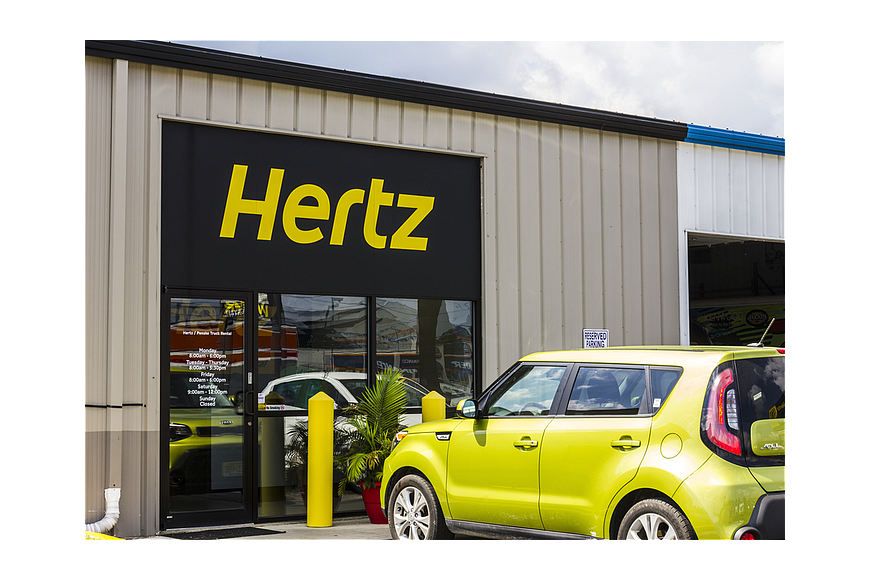- December 13, 2025
-
-
Loading

Loading

ESTERO — After several last-ditch efforts to avoid it — and five days after installing a new CEO — Hertz Global Holdings filed for bankruptcy May 23.
The Estero-based company, in a Chapter 11 filing with bankruptcy court in Delaware after the markets closed Friday, May 22, said it has $25.84 billion in assets and $24.35 billion in debts. Among the largest creditors, court records show, is a list that includes Wells Fargo, Goldman Sachs, IBM and ride-share company Lyft.
The bankruptcy ends a week that started with the company announcing it had a new CEO. In what company officials called part of an "ongoing succession planning process," it named Paul Stone, an executive vice president and head of North American retail operations, president and CEO. Stone, replaces Kathryn Marinello, who had been the top executive at Hertz since January 2017. Marinello will stay on with Hertz for a year in a consulting role.
Hertz, including its Dollar, Thrifty, Firefly, Hertz Car Sales, and Donlen subsidiaries, remains open and serving customers, according to a statement from the company. The bankruptcy also doesn’t impact its principal international operating regions including Europe, Australia and New Zealand.
The company, the release adds, says it has than $1 billion in cash on hand to support its ongoing operations. The May 23 bankruptcy statement also revealed more steps Hertz has taken in the wake of the crushing loss in car rentals from the coronavirus pandemic. Notably, those steps include implementing furloughs and layoffs of 20,000 employees, about 50% of its global workforce. That’s double the amount of employees it said it had let go as of another statement April 22.
Other steps included reducing planned fleet levels through vehicle sales and by canceling fleet orders, consolidating off-airport rental locations and deferring capital expenditures and cutting marketing spend.
The bankruptcy wasn’t unexpected: On May 5, according to public filings, the company entered into forbearances and limited waivers with some of its lenders and holders of its asset-backed vehicle debt. The forbearances, usually an agreement between a lender and borrower to delay a foreclosure, “provide Hertz with additional time through May 22 to engage in discussions with its key stakeholders with the goal to develop a financing strategy and structure that better reflects the economic impact of the COVID-19 global pandemic and Hertz’ ongoing operating and financing requirements,” the firm said in the documents.
Company officials added then that “there can be no assurances that Hertz will be able to successfully negotiate any further forbearance or waivers extending relief past May 22,” meaning it might have to either liquidate vehicles serving as collateral or explore bankruptcy options. Company officials added that “there can be no assurances that Hertz will be able to successfully negotiate any further forbearance or waivers extending relief past May 22,” meaning it might have to either liquidate vehicles serving as collateral or explore bankruptcy options.
While not unexpected, the timing — of both pandemic shutdown and the ensuing bankruptcy — stings. The company, after a few years of leadership changes and accounting issues, had been on a strong upward financial trajectory. According to a statement, that includes 10 consecutive quarters of year-over-year revenue growth and nine quarters of year-over-year adjusted corporate EBITDA improvement.